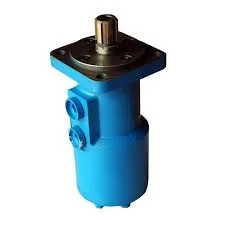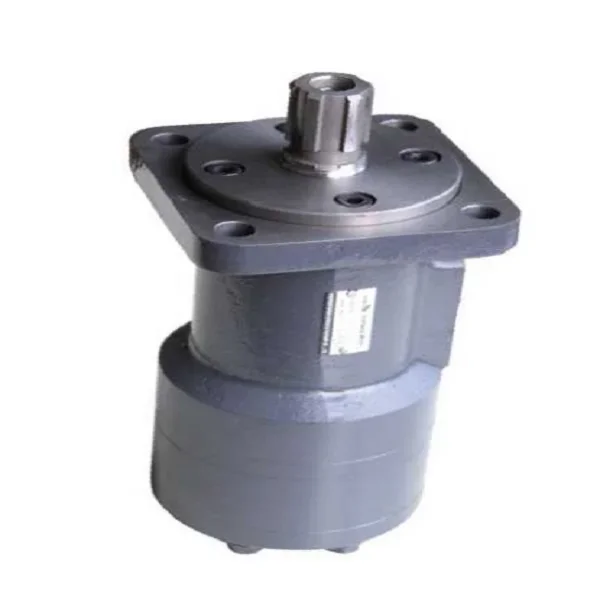Hydraulic motors play a crucial role in various industries and applications, providing powerful rotational motion to drive machines and equipment. However, it is important to recognize that running hydraulic motors at maximum pressure and speed may not be the most effective or efficient approach. In this blog, we will explore the reasons why operating hydraulic motors at their absolute limits can lead to undesirable consequences and provide insights into optimizing their performance for improved reliability and longevity.
1. Heat Generation and Temperature Rise
One of the primary concerns when operating hydraulic motors at maximum pressure and speed is heat generation. Hydraulic systems are prone to generating substantial amounts of heat due to fluid friction and inefficiencies. Running motors at their upper limits exacerbates this issue, leading to rapid temperature rise within the system. Elevated temperatures can cause seal degradation, oil breakdown, and decreased overall efficiency. By operating motors below their maximum limits, heat generation can be minimized, reducing the risk of thermal failures and improving system reliability.

2. Increased Wear and Tear
Operating hydraulic motors at maximum pressure and speed can significantly increase wear and tear on vital components. High-pressure conditions increase the force exerted on the motor's internal components, leading to accelerated wear and potential damage to critical parts such as gears, bearings, and seals. Similarly, increased rotational speeds can contribute to higher stresses and reduced component lifespan. By operating motors within their specified range, wear and tear can be better managed, ensuring longer life and reducing maintenance costs.
3. Reduced Efficiency
While it may seem counterintuitive, operating hydraulic motors at maximum pressure and speed does not necessarily result in optimal system efficiency. Excessive pressures can lead to energy losses through internal leakages, resulting in reduced overall efficiency. Additionally, operating at high speeds can introduce inefficiencies due to increased fluid turbulence and flow losses. By utilizing motors at lower pressures and controlled speeds, the hydraulic system can achieve a better balance between power output, energy consumption, and overall efficiency.
4. Safety Concerns
Operating hydraulic motors at maximum pressure and speed can also pose significant safety risks. Increased pressures within the system raise the potential for leakage or component failure, which can result in catastrophic accidents and injuries to operators or damage to equipment. Similarly, high-speed operation can compromise control and increase the likelihood of accidents occurring. By adhering to recommended operating parameters, safety risks can be minimized, ensuring a safer working environment for all.
Optimizing Hydraulic Motor Performance:
1. Proper System Design:
Ensuring appropriate system design is paramount to optimize hydraulic motor performance. Factors such as flow rates, pressure requirements, and load conditions should be carefully considered during the design phase. Oversizing components and using systems with excessive pressure ratings can lead to unnecessary wear and increased energy consumption. Consulting with hydraulic experts and engineers can help in designing optimal systems that maximize performance while operating within safe and efficient limits.
2. Regular Maintenance:
Regular maintenance is essential to keep hydraulic motors running optimally. This includes monitoring fluid quality, inspecting seals and connections, and checking for any signs of abnormal wear or leaks. Maintaining proper fluid levels and using high-quality filtration systems can effectively prevent contamination and extend the life of hydraulic motors.
3. Proper Sensing and Control Systems:
Implementing advanced sensing and control systems can help optimize hydraulic motor operation. By utilizing pressure and speed sensors and integrating them with suitable control algorithms, motors can be operated dynamically, adjusting parameters based on load requirements. This approach allows for more efficient use of power, reduces stress on components, and helps achieve optimal performance.

5. Improved Controllability
Operating hydraulic motors at maximum pressure and speed can make them challenging to control accurately. High-pressure conditions can result in sudden, jerky movements that are difficult to handle, compromising precision and accuracy in certain applications. By operating motors within a controlled range, operators have better controllability, allowing for smoother and more precise control of machines and equipment.
6. Noise and Vibration Reduction
Running hydraulic motors at maximum pressure and speed often leads to increased noise and vibration levels. These undesirable effects can affect machine operators' comfort and potentially damage surrounding equipment or structures. By operating motors at lower pressures and controlled speeds, noise levels and vibrations can be reduced, creating a quieter and more comfortable working environment.

7. Energy Conservation
Optimizing energy consumption is a crucial consideration in any hydraulic system. Operating hydraulic motors at their maximum limits can lead to excessive energy consumption due to losses from heat generation and inefficiencies. By operating motors within their recommended range, energy consumption can be minimized, resulting in energy conservation and cost savings over time.
8. Longevity of Fluids and Filters
Running hydraulic motors at maximum pressure and speed can accelerate fluid degradation, leading to decreased fluid life and increased maintenance requirements. Additionally, excessive pressures can introduce higher levels of contamination into the hydraulic system, necessitating more frequent filter replacements. By operating motors within their specified limits, the longevity of fluids and filters can be extended, minimizing maintenance costs and ensuring optimal system performance for longer durations.
9. Compatibility with Accessories and Attachments
Hydraulic systems often utilize various accessories and attachments, such as valves, cylinders, and actuators, to perform specific tasks. When operating motors at maximum pressure and speed, it can be challenging to ensure compatibility with these additional components. Operating within recommended parameters allows for easier integration of accessories and attachments into the hydraulic system, promoting compatibility and ensuring seamless operation.

10. Reduced Downtime
Operating hydraulic motors beyond their specified limits can increase the risk of failures and breakdowns, leading to unscheduled downtime. This can result in significant financial losses and disruptions to operations. By adhering to recommended operating parameters, the probability of unexpected failures is reduced, minimizing downtime and maximizing productivity.
Conclusion
In conclusion, running hydraulic motors at their maximum pressure and speed may seem like a way to achieve more power and productivity. However, this approach often leads to detrimental consequences such as increased heat generation, wear and tear on components, reduced efficiency, safety concerns, and higher maintenance costs. By operating hydraulic motors within their recommended limits and adopting proper system design, regular maintenance practices, and advanced control systems, optimal performance can be achieved. This approach ensures enhanced reliability, longer lifespan, improved energy efficiency, and ultimately, a safer and more cost-effective hydraulic system. Choose the smarter path by optimizing hydraulic motor performance and reaping the long-term benefits it offers.
At Shanghai AJA Technology Co., Ltd., we are committed to providing high-quality products and excellent customer service. Whether you need assistance with hydraulic motor cleaning or any other hydraulic component-related queries, our knowledgeable staff is ready to help.
If you are interested in our hydraulic motors or have customization needs for hydraulic motors, you are welcome to contact us
Email:15021387974@163.com
